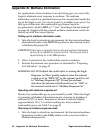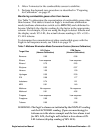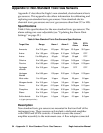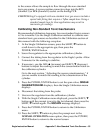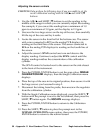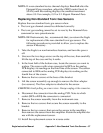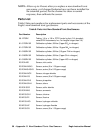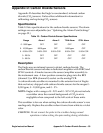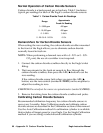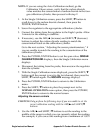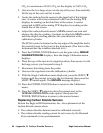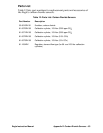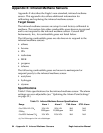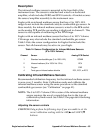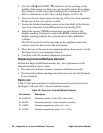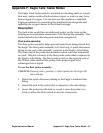60 • Appendix D: Carbon Dioxide Sensors Eagle Instruction Manual
Normal Operation of Carbon Dioxide Sensors
Carbon dioxide is a background gas in fresh air. Table 11 indicates
typical gas readings for each of the Eagle’s carbon dioxide sensors.
Demand Zero for Carbon Dioxide Sensors
When setting the zero reading, the carbon dioxide scrubber mounted
to the front of the Eagle allows you to eliminate carbon dioxide
normally found in fresh air.
NOTE: When performing a demand zero with a 0 - 20% or 0 - 50%
CO
2
unit, the use of a scrubber is not required.
1. Connect the carbon dioxide scrubber directly to the Eagle’s inlet
fitting.
2. Wait one minute for the fresh air sample to flow through the
carbon dioxide scrubber, then press the AIR/▲ button to set the
zero reading.
If the carbon dioxide sensor fails when you press the AIR/▲
button, use the zero control (marked F. ZERO) on the amplifier to
adjust the reading to zero.
CAUTION:Do not adjust the coarse zero potentiometer (marked C.ZERO).
3. Remove the tubing from the carbon dioxide scrubber and probe.
Calibrating Carbon Dioxide Sensors
Recommended calibration frequency for carbon dioxide sensors is
once every 3 months. Enter Calibration mode and calibrate carbon
dioxide sensors as described in the Calibration section of this manual.
Use the Auto Calibration method if a calibration cylinder is available
that includes all target gases for your Eagle. Use the Single Calibration
method if you are using a carbon dioxide calibration cylinder.
Table 11: Carbon Dioxide Fresh Air Readings
Range
Approximate
Fresh Air Reading
0 - 5000 ppm 400 ppm
0 - 10,000 ppm 400 ppm
0 - 5.00% 0.04%
0 - 20.0 & 0 - 50.0% 0.0%



